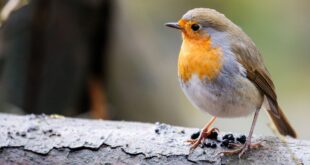The powerful story of the Roman occupation of present-day Scotland is being brought home with one of the country’s finest Roman relics featuring in a new collection of stamps issued by Royal Mail.
Tuesday, 25th August 2020, 7:30 am
The Bridgeness distance slab, which was carved around AD142 and placed close to Bo’Ness, now features on a £1.63 stamp.
The distance slab commemorates the building of the Antonine Wall, the most north westerly frontier of the Roman Empire which ran from the Firth of Forth to the Firth of Clyde.
Dr Fraser Nelson, Principal Curator of Iron Age and Roman collections at National Museum of Scotland, said the sculpture at Bo’Ness recorded the building work of this stretch of wall “down to the last pace” – all 4,652 of them, which represented almost 8km of wall and ditch.
Dr Nelson said the Bridgeness distance slab was a “stone of three parts” which featured an inscription in beautifully carved Latin, dedicating the work to the emperor Antoninus Pius.
He added: “This was a monument to the hard work of the soldiers; you can almost smell the sweat and hear the swearing in this carefully-counted tally.”
The stamp features the right-hand end of the stone which shows a religious ceremony that took place before the Wall was built, and before the army started its campaign.
Dr Nelson added: “In order to purify the troops for the task ahead, and to win the favour of the war-god Mars, a sacrifice was needed.
” This was known to the Romans as a suovetaurilia – the sacrifice of a pig, a ram and a bull to please the god. These poor beasts are shown at the front of this scene, with an attendant at the left who will carry out the bloody task, and one to the right playing pan-pipes to accompany the rite.”
Behind the animals is a group of men, with the commander of the legion, A. Claudius Charax – a native of Pergamum in Turkey – likely featuring.
“A man of limited military experience but a personal friend of the emperor. He was given this job purely on merit, of course,” Dr Nelson added,
The circular object in his right hand is a patera, a bronze or silver sacred vessel, from which he pours a libation onto an altar.
Dr Nelson said: “The group of soldiers behind him watch the solemn ceremony. One of them carries a flag bearing the legion’s title: LEG II AVG, the Second Legion Augusta. Their base was in Caerleon in south Wales, but most of them had been sent north for the campaign and the building works.”
Also featuring in the set are Dover Lighthouse; Bignor mosaic; Caerleon Amphitheatre; Ribchester helmet; the Cambridgeshire Warrior god, Gorgon’s head, Bath; and Hadrian’s Wall.
Philip Parker, spokesman for Royal Mail, said: “What did the Romans do for us? They gave us important new towns, a network of roads to link them, vast building works in stone, a new language and our calendar – they even named the country, ‘Britain’. These new stamps feature some of the most complete and striking Roman sites and objects which show their character and sophistication.”
For a full article by Dr Nelson on the Bridgeness distance slab, visit www.nms.ac.uk.
A message from the Editor:Thank you for reading this story on our website. While I have your attention, I also have an important request to make of you.With the coronavirus lockdown having a major impact on many of our advertisers – and consequently the revenue we receive – we are more reliant than ever on you taking out a digital subscription.Subscribe to scotsman.com and enjoy unlimited access to Scottish news and information online and on our app. With a digital subscription, you can read more than 5 articles, see fewer ads, enjoy faster load times, and get access to exclusive newsletters and content. Visit https://www.scotsman.com/subscriptions now to sign up.
Our journalism costs money and we rely on advertising, print and digital revenues to help to support them. By supporting us, we are able to support you in providing trusted, fact-checked content for this website.
Philip Parker, a spokesman for Royal Mail, said: “These new stamps feature some of the most complete and striking Roman sites and objects which show their character and sophistication.”
The Bridgeness distance slab is one of the finest Roman sculptures from Britain. It was carved almost 1900 years ago, around AD 142, to commemorate the building of the Antonine Wall, the Roman frontier that ran across Scotland from the Firth of Forth to the Firth of Clyde. Bridgeness (now part of Bo’ness) lies at its eastern end. Stones commemorating the building of the Wall are known from all along its length – there’s a wonderful collection of them in the Hunterian Museum in Glasgow – but this one, from the Wall’s end, was the most spectacular.
Source link



